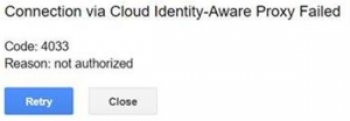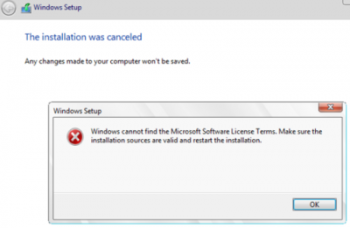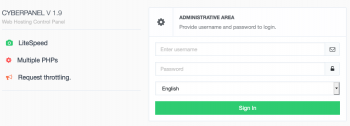Are you trying to resolve Windows error "Make Sure the File is an NTFS Volume and isn’t in a Compressed Folder or Volume" ?
We can help you.
Sometimes Windows users report that they get this error while trying to mount ISO files using Windows Explorer. This error is often encountered after a certain Windows security update.
Here at Ibmi Media, as part of our Server Management Services, we regularly help our Customers to resolve related Windows error.
Nature of the Windows error "Make Sure the File is an NTFS Volume and isn't in a Compressed Folder or Volume" ?
Below are some of the causes for this issue:
1. Windows security update:
Most of the users got this after the release of the KB4019472 Windows update which was a security update.
2. Location of ISO file:
At times the error can be due to the wrong location or path of the downloaded ISO file.
How to fix Windows error "Make Sure the File is an NTFS Volume and isn't in a Compressed Folder or Volume" ?
Apply the following tips to resolve this error.
1. Changing the Location of the ISO File
The first thing we can try to fix the error is to change the path of the downloaded ISO file.
Sometimes, the error is triggered by the address of the ISO file for some reason. However, we can fix this by moving the file to another drive.
2. Using Third-Party Applications
At times, the mount feature might be malfunctioning, thus resulting in the error.
To fix this we can use third-party software in order to mount the file.
The most commonly used applications are PowerISO software or Daemon tools. Therefore, installing any one of the applications can help us to mount the file without facing this error.
3. Using the Windows Powershell
If we are still facing the error even after moving the file to another drive, we can try to fix the error by removing the sparse flag. This can be done using Windows Powershell.
Following are the steps for removing the sparse flag:
i. Firstly, go to the Start Menu, and type in Windows Powershell.
ii. And right-click on it and run it as an administrator.
iii. After that enter the following command:
fsutil sparse setflag "C:\FilePath\FileName.iso" 0
If we receive an 'Access Denied' message after entering the command, we can fix this by removing the Read-only attribute of the ISO file through its properties.
Also, make sure that the ‘This file came from another computer and might be blocked to help protect this computer’ option is unchecked.
Once the above steps are done we can enter the command in the Windows Powershell again.
4. Removing the Windows Update
We will have to remove the security update to solve this error If none of the above solutions work out.
This can be done using the following steps:
i. First, press Windows Key + I to open Settings.
ii. And go to Update and security.
iii. Then click on View Update History and then select Uninstall updates.
iv. Now, search for the KB4019472 update.
v. And double-click it to uninstall the update.
vi. Finally, restart the system and then try mounting the file.
[Need assistance in fixing Windows error? We can help you. ]
Conclusion
This article covers methods to resolve Windows error "Make Sure the File is an NTFS Volume and isn't in a Compressed Folder or Volume" for our customers.
The first thing you should do to isolate the error is to change the path of the downloaded ISO file.
Sometimes, the error is triggered by the address of the ISO file for some reason in which case moving the file to another drive solves the problem.
Therefore, try changing the volume in which the ISO file is stored to fix your error.
Causes of this Windows error:
This error is not something new, however, there was a certain thing that made it trigger the most.
Following are the factors that usually cause it —
1. Windows 10 security update.
For most of the users, the error came into being after the release of KB4019472 Windows 10 update which happened to be a security update. This update made the error emerge for most of the users.
2. Location of ISO file.
In some cases, the error can be due to the location or path of the downloaded ISO file. In such a scenario, you will have to change the location.
This article covers methods to resolve Windows error "Make Sure the File is an NTFS Volume and isn't in a Compressed Folder or Volume" for our customers.
The first thing you should do to isolate the error is to change the path of the downloaded ISO file.
Sometimes, the error is triggered by the address of the ISO file for some reason in which case moving the file to another drive solves the problem.
Therefore, try changing the volume in which the ISO file is stored to fix your error.
Causes of this Windows error:
This error is not something new, however, there was a certain thing that made it trigger the most.
Following are the factors that usually cause it —
1. Windows 10 security update.
For most of the users, the error came into being after the release of KB4019472 Windows 10 update which happened to be a security update. This update made the error emerge for most of the users.
2. Location of ISO file.
In some cases, the error can be due to the location or path of the downloaded ISO file. In such a scenario, you will have to change the location.













